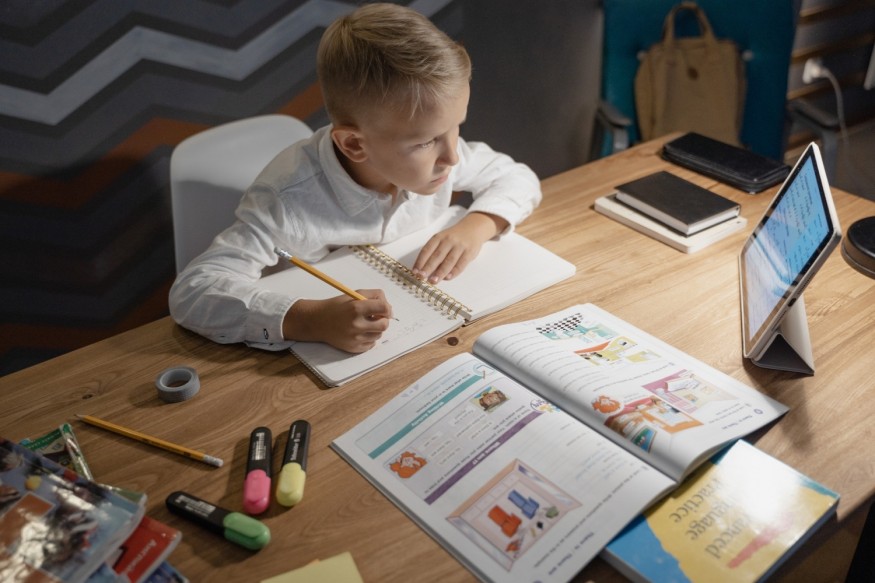How to Create an Optimal Study Space for Your Back-to-Schooler

Parents work hard to provide their children with all the opportunities to excel at school. But while kids can have time in their day and books on their desk, without focus, they may not always reach their goals. A child's mind is vulnerable to all kinds of distractions. From the sound of friends playing outside to the smell of cookies in the oven, anything can draw their attention away from their studies.
Lecturing kids on the need to concentrate isn't enough. Parents and caregivers should strive to provide a suitable study environment as well. As children grow older, homework can take more time. They need a space that is conducive to and motivating for study. Here are five tips on how to make a study zone for your child that will produce optimal conditions for learning.
1. Establish the Right Atmospheric Conditions
A study space isn't restricted to a desk and chair. The surrounding environment - including temperature and lighting - should also help students concentrate. Your child may not be able to focus if they're feeling too hot or too cold. Let them set the temperature in their study space by ceding temporary thermostat control of your home's central air and heat unit. They'll work more productively in comfort than if they're either shivering or sweltering.
You should also make sure the lighting is well balanced. Light that is too bright may cause headaches, while light that is too dim may strain their eyesight. Natural light is the best, but if that's not possible, choose an adjustable desk lamp with warm halogen bulbs, which are closest to daylight. Position the light so it's directed onto the table and not causing a glare on the computer screen.
2. Let Them Personalize the Space to Incentivize Study
Including your child in setting up the space can make them want to spend more time there. Allow them to choose motivational posters and personalized desk decor, which can increase a sense of ownership. Adding some plants can improve both mood and air quality. Recognize, however, that while some accent pieces may look cute, too many can be distracting. Know where to draw the line.
Personalization can go beyond decor. Encourage your child to study the way they are most comfortable. Make sure the desk and chair are adjusted to the child's height and the computer screen isn't causing neck discomfort. If your student can't sit in one place for a long time, consider a standing desk or a balance board to keep them engaged.
3. Minimize Distractions
Observe your child while they are studying and note what distracts them. It could be anything from a fidget toy to their cell phone. Explain how these items often ruin focus and should be avoided in a study space. If you can't persuade your child to leave their phone behind altogether, have them silence it and turn off notifications during study time.
When it's not possible to keep the house quiet, noise-canceling headphones can make a big difference. A white noise playlist will screen out dinner-making noises and sibling conversations, enabling your student to home in on their homework. If they prefer to study with background music, recommend instrumental selections that won't steal their focus.
4. Help Your Student Organize Their Space and Their Time
An organized space can lead to an organized mind. Provide enough storage in your child's study nook that their books, school supplies, and study materials are all within reach. A mix of shelves, drawers, and bins can supply needed storage and make the area look more interesting. A power strip will allow your child to charge their tablet or laptop, and a strong Wi-Fi connection is a must.
Every child manages time differently. Observe when your child starts zoning out and schedule study sessions to end before their attention span does. Giving them a kitchen timer will allow them to break their study sessions into intervals using the Pomodoro technique. By providing built-in breaks, this technique helps your child make the best use of their focused attention span.
5. Be Open to Change
As your child grows, they learn more about who they are by exploring new ideas and preferences. Don't get annoyed if the child who loved pink yesterday now wants everything in black. Keep furniture and other large pieces neutral so the study space can be modified according to different phases and trends. Remember that your student's comfort is a priority, and anything that boosts their morale and productivity is a worthwhile investment.
To foster future-oriented thinking, create a vision board with your child. It can include long-term goals and possible career paths, but also current favorite things to do. Pictures and quotes on a vision board can be changed easily, so your child can keep renewing their inspiration regularly. Surrounding them with positive influences can ignite their passion and enhance their drive to learn.
Regular Maintenance Is Key
It's arguably easier to create a study space than to maintain it. Many children neglect to put things back in their place each night, and the clutter grows. Schedule a weekly decluttering session and remove any items that don't belong in the space. Regular tidying can keep things organized and prevent the task from becoming overwhelming.
Your child's study area should nurture their love of learning and help them reach their full potential. Its very existence lets them know that they have your support, which will boost your student's morale. If you stay with them on their journey toward developing good study habits, chances are they'll become lifelong learners.
Subscribe to Latin Post!
Sign up for our free newsletter for the Latest coverage!
© 2025 Latin Post. All rights reserved. Do not reproduce without permission.















